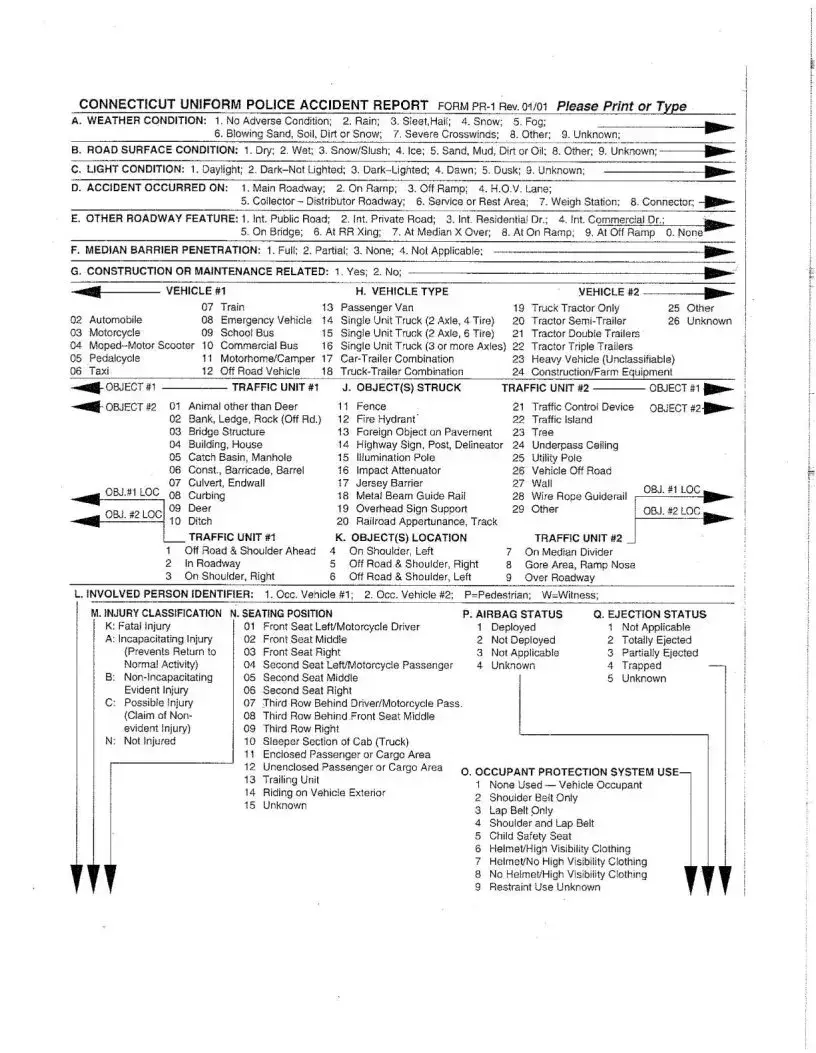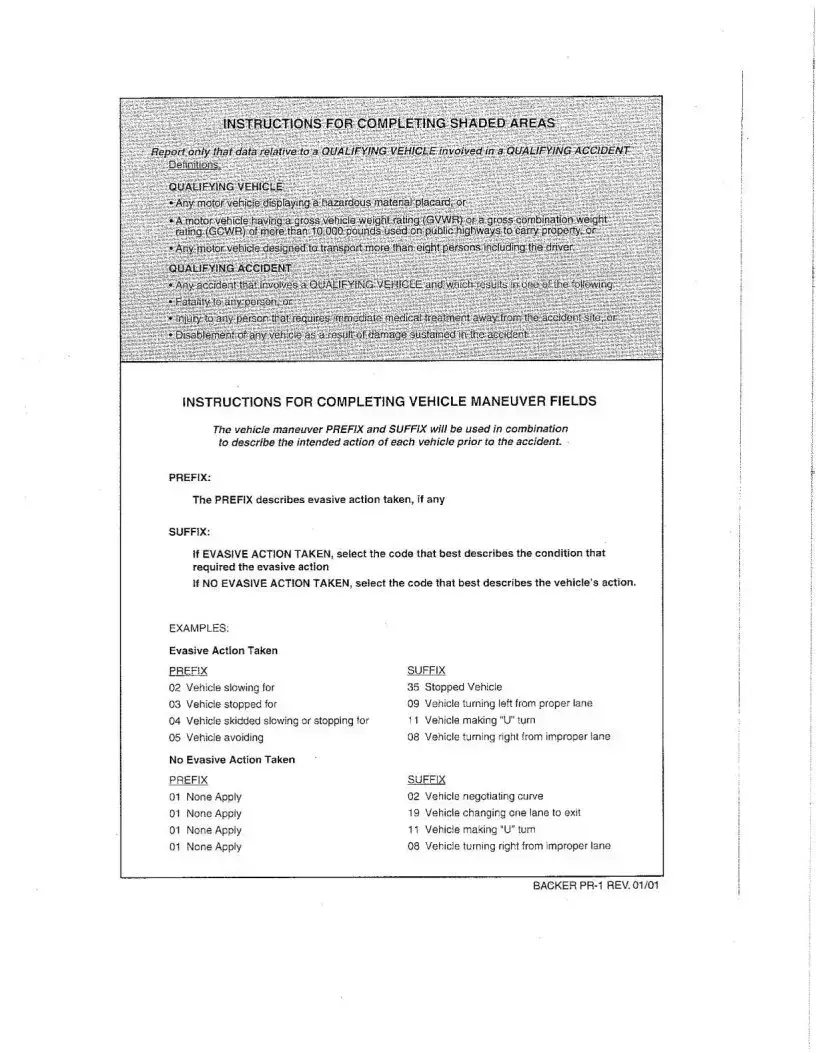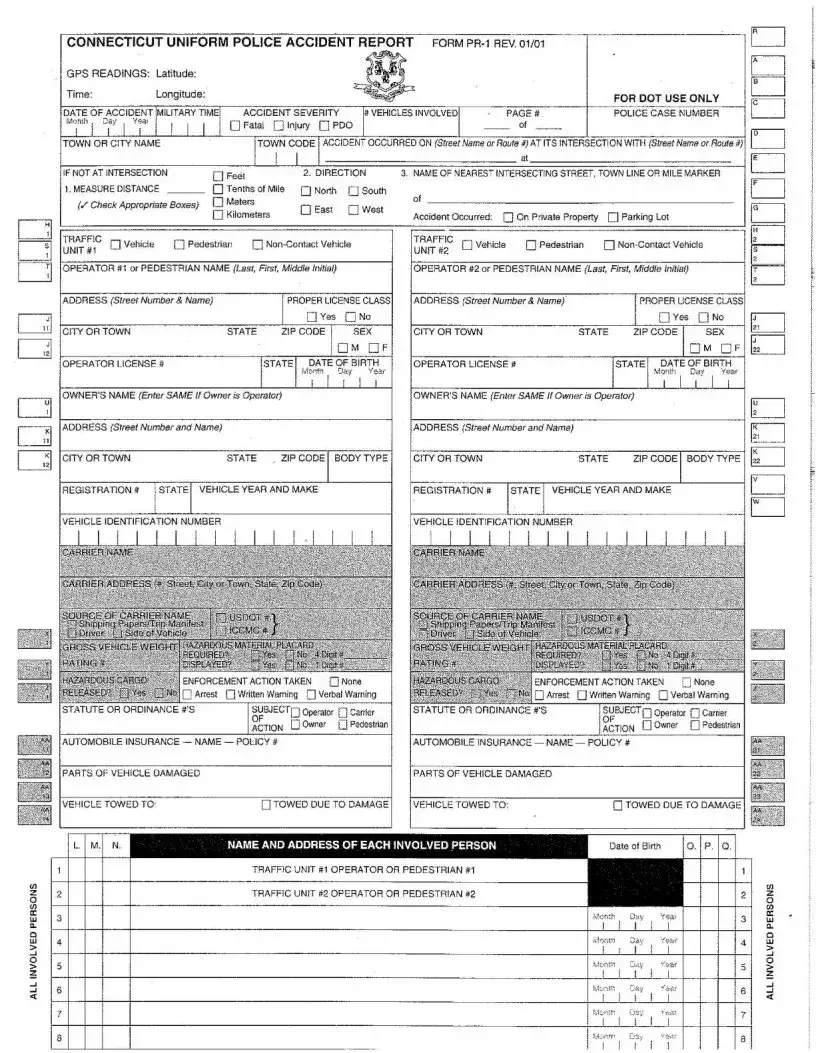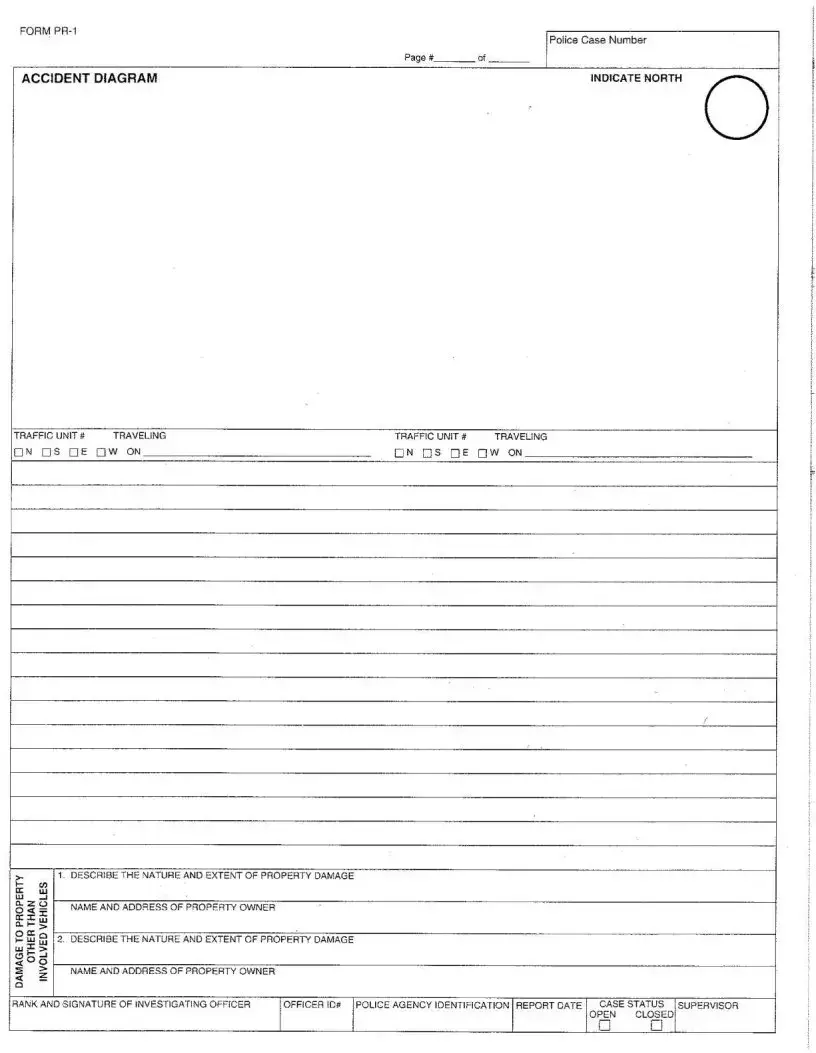The Connecticut Uniform Police Accident Report form is similar to other forms and documents used by law enforcement and insurance companies across the country. Each document collects specific information for its intended purpose, yet there are common elements such as the identification of parties involved, descriptions of the event, and conditions that might have contributed to the incident. Exploring how this form compares to others highlights the standardization in reporting vehicular accidents and the importance of detailed information gathering in post-accident procedures.
New York Motor Vehicle Accident Report: The New York Motor Vehicle Accident Report shares several similarities with the Connecticut Uniform Police Accident Report form. Both documents require detailed information about the accident, including the date, time, and location, specifics about the vehicles involved, and a narrative description of the incident. Furthermore, they each have sections dedicated to the environmental and road conditions that could have impacted the accident, illustrating their thorough approach to documenting every aspect that might influence understanding and resolution of these incidents.
California Traffic Accident Report (SR 1): Similar to the Connecticut form, California's SR 1, or Traffic Accident Report, is used by law enforcement to document traffic accidents within the state. This form also collects comprehensive details about the involved parties, including their personal information, vehicle details, and insurance status. A crucial similarity between this form and Connecticut's is the emphasis on diagramming the accident scene, allowing for a visual representation of the event. This aids in the analysis and can be critical for insurance claims and legal considerations.
Insurance Claim Forms for Auto Accidents: Although not used by law enforcement, insurance claim forms for auto accidents bear resemblance to the Connecticut Uniform Police Accident Report form in their necessity for detailed accident information. These forms typically request information on the involved parties, the extent of vehicle damage, and a personal account of the accident. The similarity lies in the objective to gather as much factual information as possible, which is vital for insurance adjusters to determine liability and compensation. The key difference is that insurance forms are primarily for internal use within the insurance company, while police reports may serve a broader audience, including legal proceedings.





